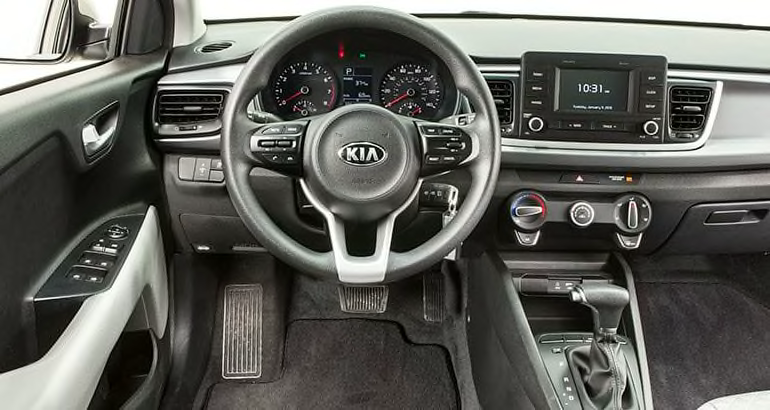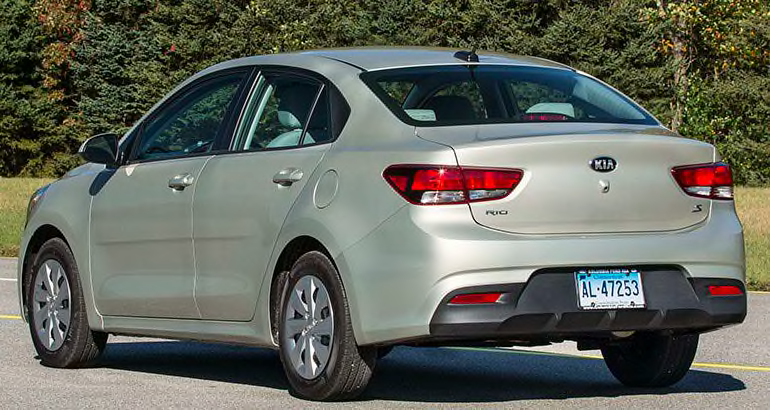Kia's new entry-level Rio sedan and hatchback get an all-new platform for 2018, resulting in a wider and slightly longer car that brings increased passenger space for the front and rear.
But even with all of the new features, the Rio may be a tough sell with so many new subcompact SUVs as competition.
We bought our own Rio and gathered some early impressions. Its low starting price ($14,000) might be tempting; adding some common options raises the price to more than $17,000. If you spent just a couple thousand dollars more, you could get a larger compact, such as the Mazda3 or Toyota Corolla, with more verve and refinement.
We'd also give stronger consideration to the Toyota Yaris iA, which is a direct competitor of the Rio but with better agility and standard automatic emergency braking.
What We Bought: Kia Rio S
Drivetrain: 1.6-liter, 130-hp four-cylinder engine; six-speed automatic transmission; front-wheel drive
MSRP: $16,100
Destination fee: $895
Options: Cargo and floor mats
Total cost: $17,220
How It Drives
The Rio's ride is stiff and might be among the worst we've experienced at CR, even among other subcompact cars we've recently tested. (In fairness, none in this group excels at ride comfort.)
The 130-hp, 1.6-liter four-cylinder engine and six-speed automatic transmission get the job done when it comes to keeping the Rio up to speed in traffic. The powertrain is unobtrusive, but the car isn't quick by any means. We're seeing about 35 mpg, according to the trip computer.
We found the handling to be responsive and confident, partly compensating for the Rio's crummy ride. Long car trips might be tough to handle with the Rio's relatively high interior noise.

Inside
Typical of subcompacts, the cabin is narrow. But despite its small size, the Rio offers relatively good room inside. The rear seat is also accommodating, so long as you're not carrying any NBA players.
The front seats, however, are merely ordinary; the fabric-covered cushions seem to lose support on any drive that lasts longer than an hour.
Most testers found the driving position accommodating, praising the way the seat can be raised, but they knocked the car for not having a telescopic steering wheel.
Fit and finish is decent overall for a budget car.
Controls/infotainment
The new Rio carries on one of Kia's positive trademarks: controls that are super-easy to master and use on a daily basis. The touch screen is clear and intuitive, and it's positioned within easy reach of the driver.
It's a snap to pair a phone, and USB and auxiliary ports are clearly located in the center console. Another nice touch is three months of free satellite radio. But Android Auto and Apple CarPlay are available only on the top EX trim.
Safety
Automatic emergency braking and forward-collision warning are available, but only on the top trim.
Bottom Line
The case for the Rio is similar to other subcompacts. At over $17,000 for our midlevel S model, we think that buying a nicely equipped and more substantial used car might be a better idea than getting a new Rio.
We'll know more as we rack up the miles and complete our testing.






















